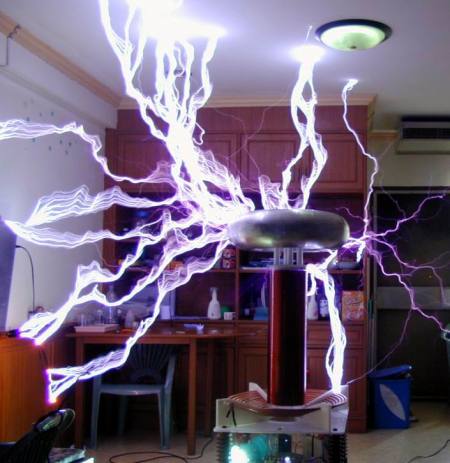
We’re in 2016 and the Australian Liberal Government is heading to the next election desperately trying to convince Australians that we don’t need a National Broadband Network (NBN) based on Fibre-to-the-Premises.
But what if we lived 100 years ago in 1916 and the great Australian election issue was about building a National Electricity Network (NEN) based on Electricity-to-the-Home (ETTH)?
Imagine how Malcolm Turnbull and the Liberal Party would have tried to persuade Australians from the early 20th century to reject universal access to mains electricity in favour of a “Multi-Technology Mix”.
His speeches might have sounded like this:
“The opposition’s wacko Electricity-to-the-Home NEN is wasteful and extravagant.
Don’t get me wrong – electricity is a marvellous invention that has revolutionised public transport. There is no doubt that electric trains, trams and trolley buses have changed our big cities for the better – Sydney-siders shall soon have no need to expend their hard-earned money on horses or endure walking through streets covered in horse manure or breathing smoke from steam trains.
But does every household really need electricity? Of course not!
Currently available technologies already meet Australian household needs:
• Electric lighting? Candles and gas lanterns work perfectly.
• Electric heating? Wood-fire, kerosene and coal burners are cheap and heat peoples homes efficiently.
• Radio receivers? Crystal set radios get their power from the airwaves. Those wealthy enough to own battery-powered radio receivers can afford to purchase their own supply of dry cell batteries to power them.
• Washing machines with electric motors? Outrageously expensive. Hand-cranked washing machines & wringers work well enough and are affordable on a common worker’s salary.
• Electric refrigeration? Also outrageously expensive. Most people I know manage fine with iceboxes and preserved food.
As we can see, universal access to electricity is an unnecessary extravagance. The opposition’s plan will deprive our budget of millions of dollars needed to provide materiel for the war effort following our setback during the Gallipoli campaign. Indeed, our defence minister is hard at work closing deals to deliver the next generation of biplanes, chemical munitions and trench excavation equipment that will ensure Australia’s national security and guarantee our strategic edge for decades to come.
Unfortunately, when the opposition was last in power, they squandered too much of your taxpayer money during their previous attempt to implement their wacko universal electricity plan, so it cannot simply be dismantled without further loss.
Nonetheless, our government has a solution to get Australian taxpayers out of this financial quagmire. The Vertigo review panel into the NEN has determined that Australian households needs will be satisfied by our government’s alternative energy plan based on a Multi-Technology Mix that will be delivered cheaper, faster and better:
1. Brand new dwellings shall be connected to the electrical grid.
2. Dwellings that have already been connected to the electrical grid shall remain connected.
3. Dwellings in an area with gas piping shall have gas lighting installed on their street. The government shall subsidise the installation of glass windows so that more light from the street lamps may enter their homes.
4. Other dwellings shall receive subsidised candles. Commonwealth scientists have developed an enhanced paraffin candle wax that burns up to 10x as bright as current candles for 50% longer.
5. Households who desire a connection to the electrical grid shall have the option of paying £600 for a feasibility study to determine the suitability of their dwelling for connectivity.
If the dwelling is suitable, the owner shall pay a construction fee to cover the cost of extending wires from the nearest substation, erecting wooden poles and terminating the cable in their location. For most people, the cost is expected to be less than £10,000.
As you can see, our plan is practical, fiscally responsible and satisfies every Australian’s domestic energy needs in this challenging climate of national security threats and budget deficits.
Malcolm Turnbull
Prime Minister of Australia”
Fortunately, such a dystopian past did not take place. All Australians ended up getting electricity to their homes, as did people in all developed countries around the world.
Those in charge 100 years ago understood perfectly well that electricity was a revolutionary technology that needed to be fully embraced – one whose possibilities were yet to be fully revealed.
Today, we now live in homes with Computers, Telephones, Refrigerators, TVs, Washing Machines, Dishwashers, Vacuum Cleaners, Air Conditioners and many other devices powered by electricity – all of which have contributed to economic growth and a higher standard of living, but most importantly, affordable to the average income earner.
So let us ask ourselves:
• If electricity had only been available to a select few, would businesses have gone to the effort to develop and manufacture these devices?
• If electricity had only been available to a select few, would there have been enough consumer demand to create the economy of scale that would have made these devices cheap enough to manufacture and be affordable?
Probably not!
Now let us ask ourselves – why should Fibre-to-the-Home be any different?
{ 0 comments… add one now }